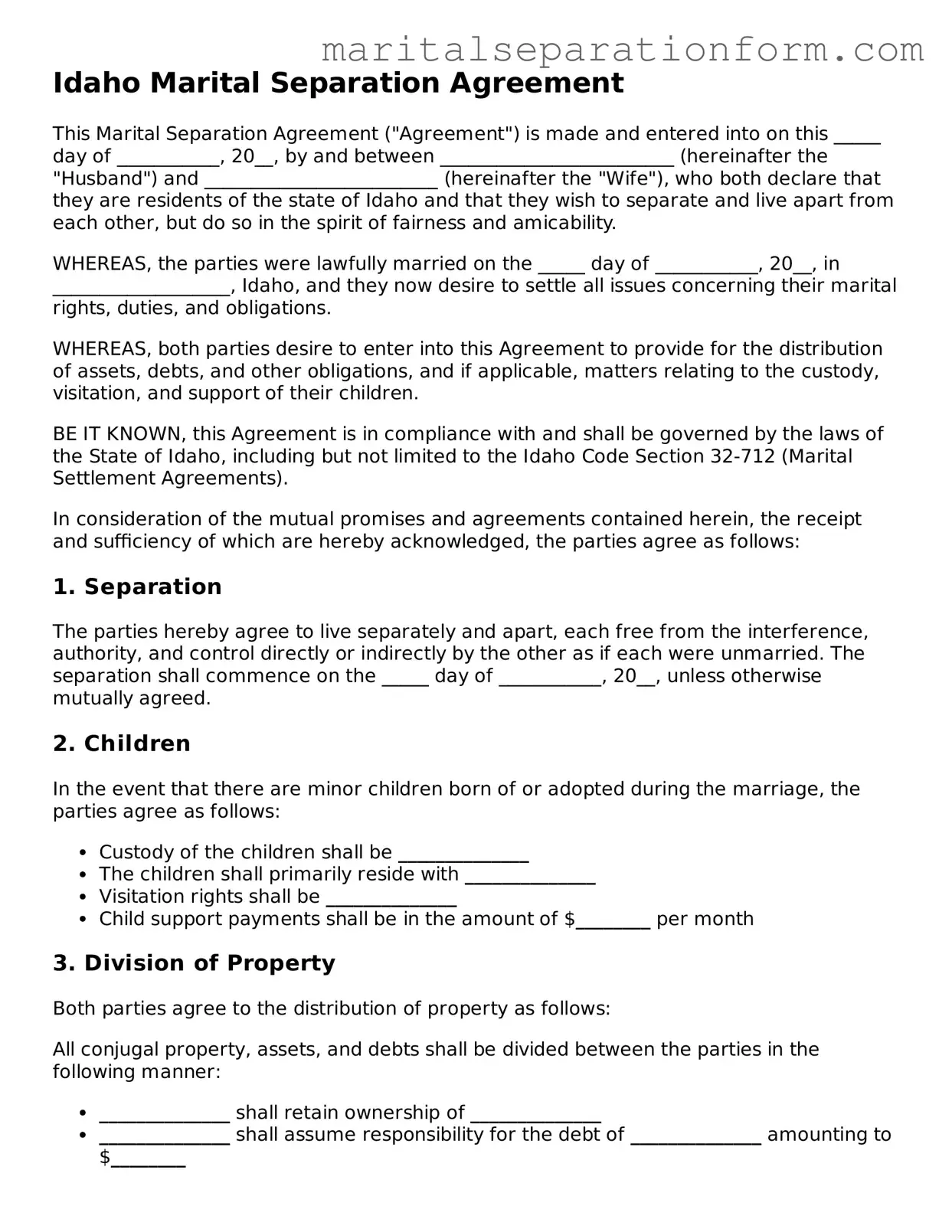Idaho Marital Separation Agreement
This Marital Separation Agreement ("Agreement") is made and entered into on this _____ day of ___________, 20__, by and between _________________________ (hereinafter the "Husband") and _________________________ (hereinafter the "Wife"), who both declare that they are residents of the state of Idaho and that they wish to separate and live apart from each other, but do so in the spirit of fairness and amicability.
WHEREAS, the parties were lawfully married on the _____ day of ___________, 20__, in ___________________, Idaho, and they now desire to settle all issues concerning their marital rights, duties, and obligations.
WHEREAS, both parties desire to enter into this Agreement to provide for the distribution of assets, debts, and other obligations, and if applicable, matters relating to the custody, visitation, and support of their children.
BE IT KNOWN, this Agreement is in compliance with and shall be governed by the laws of the State of Idaho, including but not limited to the Idaho Code Section 32-712 (Marital Settlement Agreements).
In consideration of the mutual promises and agreements contained herein, the receipt and sufficiency of which are hereby acknowledged, the parties agree as follows:
1. Separation
The parties hereby agree to live separately and apart, each free from the interference, authority, and control directly or indirectly by the other as if each were unmarried. The separation shall commence on the _____ day of ___________, 20__, unless otherwise mutually agreed.
2. Children
In the event that there are minor children born of or adopted during the marriage, the parties agree as follows:
- Custody of the children shall be ______________
- The children shall primarily reside with ______________
- Visitation rights shall be ______________
- Child support payments shall be in the amount of $________ per month
3. Division of Property
Both parties agree to the distribution of property as follows:
All conjugal property, assets, and debts shall be divided between the parties in the following manner:
- ______________ shall retain ownership of ______________
- ______________ shall assume responsibility for the debt of ______________ amounting to $________
4. Spousal Support
Regarding spousal support:
- Husband shall pay Wife a monthly spousal support of $________ -OR-
- Wife shall pay Husband a monthly spousal support of $________ -OR-
- Both parties agree that no spousal support shall be paid.
5. Entire Agreement
This Agreement constitutes the entire agreement between the parties and supersedes any prior understanding or representation of any kind preceding the date of this Agreement. There are no other promises, conditions, understandings, or other agreements, whether oral or written, relating to the subject matter of this Agreement.
6. Amendment
This Agreement may be amended only by a written agreement clearly setting forth the amendments and executed by both parties.
7. Governing Law
This Agreement shall be governed by and construed in accordance with the laws of the State of Idaho.
IN WITNESS WHEREOF, the parties hereto have executed this Agreement on the date first above written.
Husband's Signature: _________________________
Date: _______________
Wife's Signature: _________________________
Date: _______________
